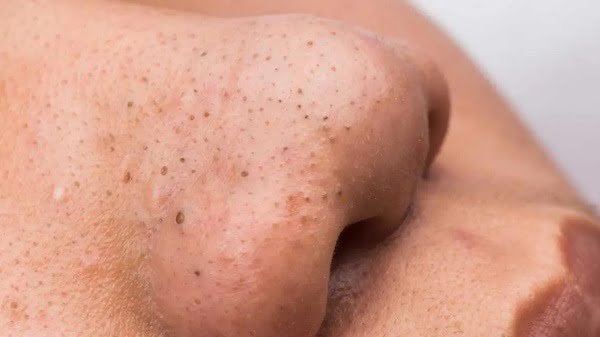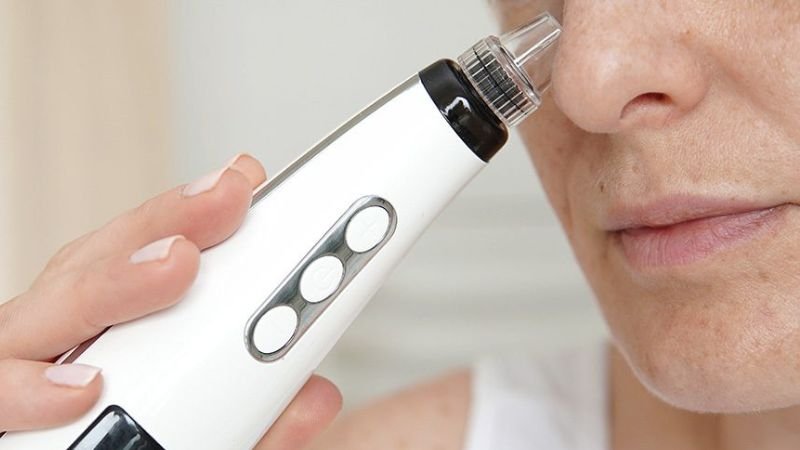Introduction
Salicylic acid, a beta hydroxy acid (BHA), is a potent ingredient renowned for its ability to unclog pores and banish blackheads. If you’re tired of battling stubborn blackheads, incorporating salicylic acid into your skincare routine might just be the solution you’ve been searching for. Let’s delve into the details of how to effectively use salicylic acid to bid farewell to those pesky blackheads.
Understanding Salicylic Acid:
Salicylic acid works by penetrating deep into the pores, where it dissolves excess oil (sebum) and exfoliates dead skin cells, effectively preventing the formation of blackheads. Its anti-inflammatory properties also help reduce redness and inflammation associated with acne breakouts, making it a versatile ingredient for achieving clearer, smoother skin.
Choosing the Right Product:
When selecting a salicylic acid product for blackheads, opt for formulations specifically designed for acne-prone or oily skin. Look for products with a concentration of 0.5% to 2% salicylic acid, as higher concentrations may be too harsh for daily use, especially for sensitive skin types. Popular options include cleansers, toners, serums, spot treatments, and exfoliating pads.
Incorporating Salicylic Acid into Your Skincare Routine:
- Start Slowly: If you’re new to salicylic acid, introduce it gradually into your skincare routine to allow your skin to acclimate. Begin by using it every other day or a few times a week, and gradually increase frequency as tolerated.
- Cleanse with a Salicylic Acid Cleanser: Start your skincare routine by cleansing your face with a salicylic acid cleanser. Gently massage the cleanser onto damp skin, focusing on areas prone to blackheads, such as the nose, chin, and forehead. Rinse thoroughly with lukewarm water and pat your skin dry.
- Apply a Salicylic Acid Toner: After cleansing, apply a salicylic acid toner to further exfoliate and clarify the skin. Pour a small amount of toner onto a cotton pad and gently swipe it across your face, avoiding the delicate eye area. Allow the toner to dry before proceeding to the next step.
- Target Stubborn Blackheads with a Spot Treatment: For stubborn blackheads or isolated breakouts, apply a salicylic acid spot treatment directly onto the affected areas. Use a clean fingertip or cotton swab to dab a small amount of the treatment onto the blackheads, allowing it to absorb fully into the skin.
- Moisturize and Protect: Follow up with a lightweight, oil-free moisturizer to hydrate and balance the skin. Finish your skincare routine by applying a broad-spectrum sunscreen with an SPF of 30 or higher, especially if you’ll be exposed to sunlight, as salicylic acid can increase sun sensitivity.
Incorporating Salicylic Acid into Your Skincare Routine:
- Start Slowly: If you’re new to salicylic acid, introduce it gradually into your skincare routine to allow your skin to acclimate. Begin by using it every other day or a few times a week, and gradually increase frequency as tolerated.
- Cleanse with a Salicylic Acid Cleanser: Start your skincare routine by cleansing your face with a salicylic acid cleanser. Gently massage the cleanser onto damp skin, focusing on areas prone to blackheads, such as the nose, chin, and forehead. Rinse thoroughly with lukewarm water and pat your skin dry.
- Apply a Salicylic Acid Toner: After cleansing, apply a salicylic acid toner to further exfoliate and clarify the skin. Pour a small amount of toner onto a cotton pad and gently swipe it across your face, avoiding the delicate eye area. Allow the toner to dry before proceeding to the next step.
- Target Stubborn Blackheads with a Spot Treatment: For stubborn blackheads or isolated breakouts, apply a salicylic acid spot treatment directly onto the affected areas. Use a clean fingertip or cotton swab to dab a small amount of the treatment onto the blackheads, allowing it to absorb fully into the skin.
- Moisturize and Protect: Follow up with a lightweight, oil-free moisturizer to hydrate and balance the skin. Finish your skincare routine by applying a broad-spectrum sunscreen with an SPF of 30 or higher, especially if you’ll be exposed to sunlight, as salicylic acid can increase sun sensitivity.
- Use Salicylic Acid Exfoliating Pads: Incorporating salicylic acid exfoliating pads into your routine can provide a convenient and effective way to target blackheads. These pre-soaked pads are formulated with the right amount of salicylic acid and other beneficial ingredients, making them ideal for on-the-go use or for those with busy lifestyles.
- Consider Leave-On Products: In addition to cleansers and toners, consider incorporating leave-on products such as serums or lotions containing salicylic acid into your routine. These products can provide prolonged exposure to salicylic acid, allowing for deeper penetration into the pores and more effective blackhead prevention.
- Don’t Overdo It: While salicylic acid is highly effective at exfoliating the skin and unclogging pores, using it too frequently or in high concentrations can lead to irritation, dryness, and increased sensitivity. Stick to the recommended usage instructions and listen to your skin’s response. If you experience any adverse reactions, scale back your usage or consult a dermatologist for guidance.
- Combine with Other Acne-Fighting Ingredients: To enhance the effectiveness of salicylic acid, consider combining it with other acne-fighting ingredients such as benzoyl peroxide or niacinamide. These ingredients can complement the action of salicylic acid and help address multiple factors contributing to acne and blackheads.
- Be Mindful of Other Skincare Products: When using salicylic acid products, be mindful of other skincare products in your routine. Avoid using harsh or abrasive products that can strip the skin’s natural oils or disrupt its barrier function. Opt for gentle, non-comedogenic formulations that won’t exacerbate blackhead formation.
- Stay Consistent: Consistency is key when using salicylic acid for blackheads. Incorporate it into your skincare routine regularly and stick to the recommended usage frequency to maximize its benefits. With consistent use over time, you’ll likely notice a significant improvement in the appearance of blackheads and overall skin clarity.
- Monitor Results and Adjust as Needed: Keep track of how your skin responds to salicylic acid treatment and adjust your routine accordingly. If you notice improvements in blackhead congestion but still experience occasional breakouts, consider tweaking your routine or adding complementary products to address specific concerns.
Tips for Optimal Results:
Be patient and consistent with your salicylic acid routine, as it may take several weeks to see significant improvement in blackhead congestion.
– Avoid using salicylic acid products in conjunction with other exfoliating ingredients like retinoids or alpha hydroxy acids (AHAs), as this may cause irritation.
– If you experience excessive dryness, redness, or irritation, reduce the frequency of salicylic acid use or consult a dermatologist for personalized advice.
Conclusion:
Salicylic acid can be a game-changer in your battle against blackheads, thanks to its powerful exfoliating and pore-clearing properties. By incorporating salicylic acid products into your skincare routine and following these tips, you can effectively target blackheads and achieve clearer, smoother skin. Say hello to a clearer complexion and goodbye to stubborn blackheads with the help of salicylic acid!
FAQs related to "How to use salicylic acid for blackheads"
Salicylic acid is generally well-tolerated by most skin types, including oily, combination, and acne-prone skin. However, individuals with sensitive or dry skin may experience irritation or excessive dryness with salicylic acid products. It’s advisable to patch test new products and start with lower concentrations to assess tolerance.
The frequency of salicylic acid usage depends on individual skin tolerance and the specific product formulation. Generally, it’s recommended to start with once daily application, either in the morning or evening, and adjust based on how your skin responds. Some may find it beneficial to use salicylic acid every other day or a few times a week to prevent over-drying or irritation.
Yes, salicylic acid can be combined with other acne-fighting ingredients such as benzoyl peroxide, niacinamide, or retinoids to enhance efficacy. However, it’s essential to introduce these ingredients gradually and monitor how your skin responds to avoid over-exfoliation or irritation. Consult a dermatologist if you’re unsure about combining specific ingredients.
It’s best to consult with a healthcare professional or dermatologist before combining salicylic acid with prescription acne medications. While salicylic acid is generally considered safe for use with many acne treatments, certain combinations may increase the risk of irritation or adverse reactions. Your healthcare provider can provide personalized advice based on your specific skincare needs.
The timeframe for seeing results from salicylic acid can vary depending on factors such as the severity of blackhead congestion, individual skin characteristics, and the consistency of product usage. Some may notice improvements within a few weeks of regular use, while others may require more time. It’s important to be patient and consistent with your skincare routine to achieve optimal results.
In some cases, salicylic acid may initially cause a temporary increase in blackhead activity as it works to unclog pores and bring impurities to the surface. This is often referred to as a “purging” period and is a normal part of the skin’s renewal process. With continued use, blackhead congestion typically improves, leading to clearer, smoother skin over time. If irritation persists or worsens, discontinue use and consult a dermatologist.
Yes, salicylic acid can be effective for treating body acne, including blackheads, on areas such as the chest, back, and shoulders. Look for body washes, sprays, or lotions containing salicylic acid specifically formulated for treating acne on the body. Follow the same principles of gradual introduction and consistency for best results.












